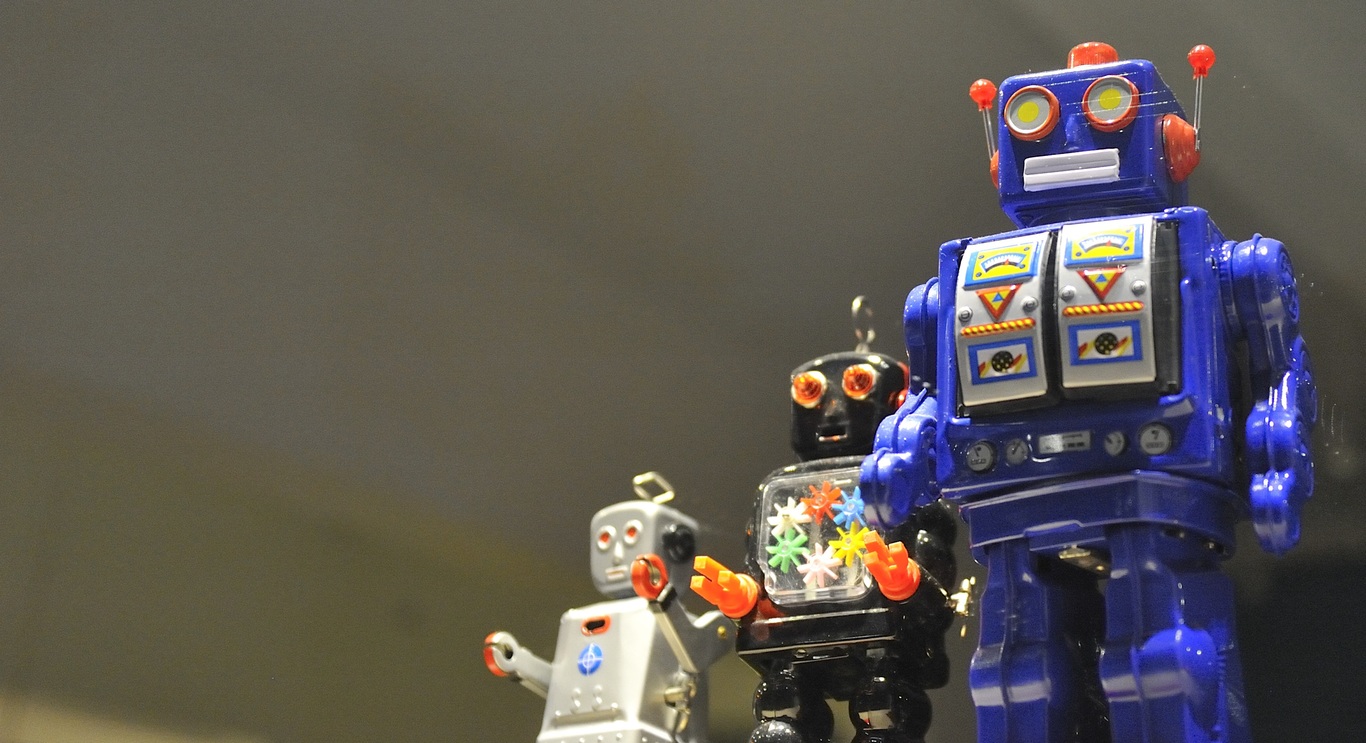Why Ireland should welcome the robots coming to 'take' our jobs
The next industrial revolution will have a wide-reaching impact on the workforce.
MANUFACTURING IS GOING through its fourth industrial revolution, and it’s already having a major impact on traditional business models in the sector.
The advent of the industrial internet of things, along with new technologies like additive manufacturing, augmented reality and collaborative robotics, coupled with the hyper-connectivity of social media platforms and the related big data analytics explosion, has seen the manufacturing sector poised to take the next step into a bold new future.
For the consumer, at least, that future looks bright. It promises the instant delivery of top-quality, connected ‘smart’ products, all produced at the point of use with less energy, less materials and at a lower cost than ever before.
However, the challenges that remain in the realisation of that promise are self-evident and continue to be the subject of heated discussion.
Meanwhile, the commercial potential of this future marketplace has everyone from global CEOs to EU policymakers and SME owner-managers producing strategies to deliver the ecosystems needed to tackle these diverse technical challenges.
For fear of missing out, people need to get together, and never has the mantra ‘go big or go home’ been more apt.
But what will happen to my job?
One often-forlorn message to emerge from any discussions on the future of manufacturing is the apparent collapse of the role of the worker in this future vision. A quick Google search yields much in the way of detail to support this argument.
For example, the excellent video titled Humans Need Not Apply is both a well-structured and thoughtful in its presentation of this future, worker-less vision.
Another interesting piece of work, from Oxford researchers and Deloitte, involved devising an online calculator to determine if a robot will steal your job.
You simply plug in your profession and the system comes up with the statistical probability of you being replaced by automated solutions in the next 20 years.
The job of an electrical technician, for example, has only a 17% chance of surviving the next industrial revolution, while a nurse has a 99% chance of surviving a future robot takeover.
Is it all bad news?
So what will the development of collaborative robotics, smart specialisation and hyper-connectivity in our manufacturing sector really mean for the manufacturing workforce? Perhaps not as much as you may initially think.
Professor Johan Stahre, speaking at the World Manufacturing Forum in June, argued that there is some confusion in the literature around terms like ‘tasks’ and ‘occupations’.
He suggests that the automation of tasks should be viewed positively. Routine, repetitive tasks currently being undertaken by a human worker will – and some would argue should – be overtaken by the inevitable robot revolution.
The fate of the occupation, however, may be somewhat different, in most cases undergoing a transformation process. As mentioned earlier, in the case of a nurse, the automation threat would seem remote.
However, in the area of human illness determination, artificial intelligence has already shown itself more accurate and efficient than its human counterpart, the humble GP.
One would assume that the role of GP would transform to that of providing higher-impact care, rather than being consigned to the unemployment lines.
Human in the loop
Simply put, it makes sense to automate the tasks suited to such an approach and refocus the human role within that occupation to higher-value activities.
To reinforce this point, a recent McKinsey report indicates that only 5% of all current occupations will be lost but that over 60% will change significantly. It would seem reasonable to apply the same logic to the manufacturing sector.
Previously, repetitive, mundane tasks being undertaken by a human worker will be replaced by a more collaborative ecosystem, where the robot partner – and other ‘industry 4.0′ innovations – will work with the human to achieve increased productivity and impact between them.
This human-in-the-loop concept would seem a far more realistic vision for the interim future. It will in turn have implications for the types of jobs which will become available in the future within the Irish manufacturing sector.
According to the IDA, over 55% of jobs in this sector are already classified as either medium- or high-tech in profile. In effect, jobs in this sector are becoming more challenging, more interesting and ultimately more fulfilling.
With this diverse range of manufacturing jobs across the country, the future is both challenging and bright for our young, educated workforce. Bring on the robots, the Irish are ready.
Andrew Lynch is chief innovation officer with Irish Manufacturing Research.






